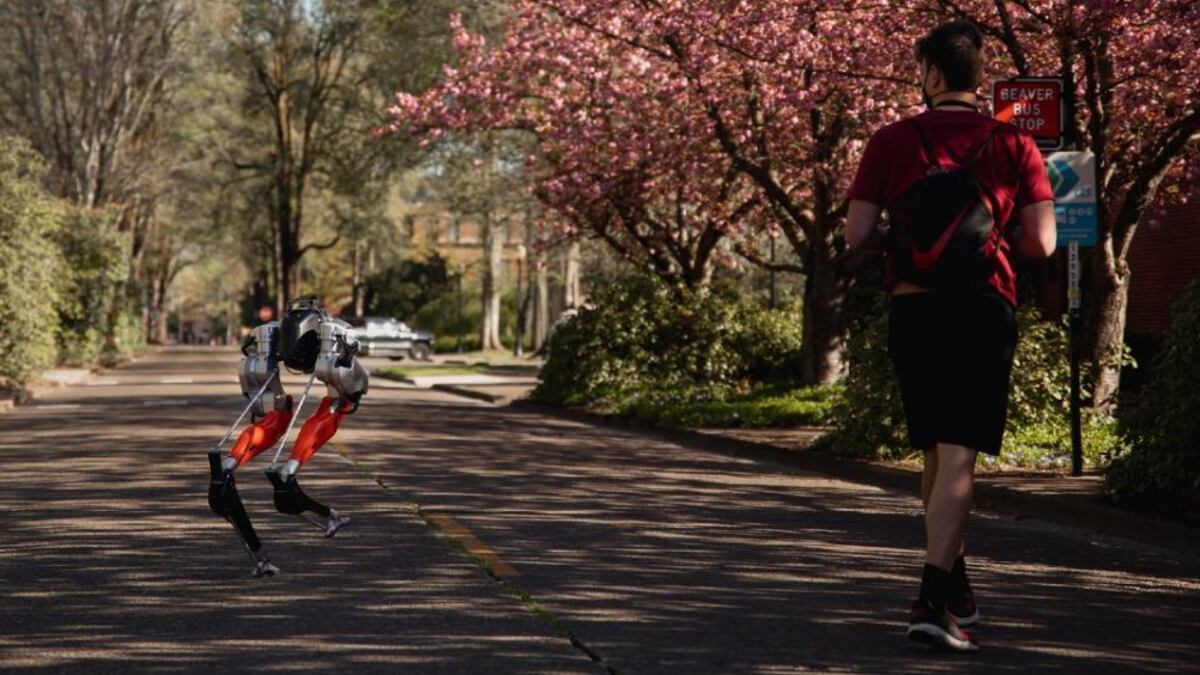Cassie the robot, an automaton invented at the Oregon State University College of Engineering and produced by OSU spinoff company Agility Robotics, has set a Guinness World Record for the fastest 100 meters by a bipedal robot.
“We have been building the understanding to achieve this world record over the past several years, running a 5k and also going up and down stairs,” stated graduate student Devin Crowley, the leader of the Guinness effort, in a press release. “Machine learning approaches have long been used for pattern recognition, such as image recognition, but generating control behaviors for robots is new and different.”
Cassie was created under the guidance of robotics professor Jonathan Hurst with a $1 million grant from the Defense Advanced Research Projects Agency. The robot achieved a historic time of 24.73 seconds at OSU’s Whyte Track and Field Center, sprinting with no falls.
“Cassie has been a platform for pioneering research in robot learning for locomotion,” Crowley said. “Completing a 5k was about reliability and endurance, which left open the question of, ‘How fast can Cassie run?’ That led the research team to shift its focus to speed.”
Cassie has knees that bend like an ostrich’s and operates with no cameras or external sensors. The robot was first introduced in 2017 in collaboration with artificial intelligence professor Alan Fern.
“Starting and stopping in a standing position are more difficult than the running part, similar to how taking off and landing are harder than actually flying a plane,” Fern said. “This 100-meter result was achieved by a deep collaboration between mechanical hardware design and advanced artificial intelligence for the control of that hardware.”
Hurst believes Cassie’s run is just the beginning.
“This may be the first bipedal robot to learn to run, but it won’t be the last,” he said. “I believe control approaches like this are going to be a huge part of the future of robotics. The exciting part of this race is the potential. Using learned policies for robot control is a very new field, and this 100-meter dash is showing better performance than other control methods. I think progress is going to accelerate from here.”
